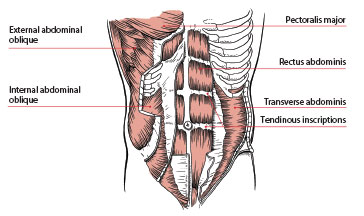8 Things that Slow Down Your Metabolism
ACE Fit Share
September 12, 2016

How many times have you thought to yourself, “I can’t lose weight because my metabolism is slow.” Over the past two decades as nutritionists, we’ve heard that time and again from our clients. How do you know if your metabolism is actually slow? Can it be fixed? And is the problem really your metabolism?
Simply put, metabolism the way your body converts the food and drink you consume for energy, and is usually measured in calories. We can determine how many calories your body burns each day by plugging information into a variety of formulas that have been designed to measure this. Click here to access the formulas and see what you get. As there is no single calculation that is considered the best, we recommend that you do all of the formulas, which will give you a range in which your metabolism may fall. A more accurate way is to have your metabolism measured through indirect calorimetry, which uses a machine to measure oxygen consumption. In less than 10 minutes you can know your resting metabolic rate (RMR).
Metabolism is a complex process that’s affected by more than just what you eat and how much you exercise. There are a number of factors that might be sabotaging your metabolism, and you might not even know it.
1. INCONSISTENT MEAL TIMES

When your meals times come at regularly spaced intervals, your body uses up the calories for fuel and burns more calories in between meals. If your eating pattern is erratic, your body gets confused and isn’t quite sure when the next meal is coming, so it goes into conservation mode. Calorie burn is reduced and more food is put into storage (fat cells and glycogen stores).
2. GETTING TOO LITTLE SLEEP
Numerous studies have shown that sleep is a key factor in gaining and losing weight. When you do not get enough sleep, hormones that control hunger and fullness go haywire. Too much ghrelin (the hunger hormone) and too little leptin (the fullness hormone) get produced, which leaves you feeling hungry all day and you lose the ability to know when you are full. Plus, more cortisol gets produced, which increases cravings for starchy, sugary and fatty foods. Recent studies on chronic sleep deprivation suggest that the calories you eat are burned less efficiently. Aim for 7.5 to 9 hours of sleep each night.
3. NOT EATING ENOUGH

If you are “dieting” to lose weight, eating too few calories can actually backfire and keep you from achieving your goal. Yes, creating a calorie deficit will help you lose weight, but there is a point in each individual that cutting calories too low will put the body into starvation mode and slow down metabolism to keep you alive. Make sure you get enough calories and a balance of macronutrients (protein, carbohydrates and fats) to keep your metabolism from crashing. Read more about macros here.
4. SKIPPING OUT ON STRENGTH TRAINING
Most people make the mistake of only doing cardio (aerobic) exercise because it burns a good amount of calories while it’s being done. But after the exercise is over, calorie burn returns to resting levels. Strength training is a key component of metabolism because it is directly linked to muscle mass. The more active muscle tissue you have, the higher your metabolic rate. Whether you lift weights, use resistance bands or use your own body weight for resistance, resistance creates microtears in the muscle tissue. As your body repairs these tears, muscle tissue grows and requires more calories to stay alive. One of the best ways to strength train to get the best response from your muscle is to focus on the eccentric (or lowering) portion of any move. Eccentric moves are more muscularly damaging and require more effort to repair than concentric movements (the lifting portion of a move), and thus increase metabolism more. So, slow down when you strength train to increase your metabolism.
5. SITTING TOO MUCH

If you exercise an hour a day, but spend the other 23 hours sitting or lying down, your metabolism will slow down. Sitting for longer than 20 minutes can put your body into a more relaxed, non-energy-burning state. If your job keeps you chained to a desk or behind the wheel, get up once an hour to move around for a few minutes. Periodically moving is shown to help decrease triglycerides, blood sugar, waistlines and cholesterol as well as cause a small spike in metabolism.
6. WHAT YOU DRINK
Consider this tip a two-for-one: Drinking too little water leads to dehydration, which can cause you to burn up to 2% fewer calories. All your body’s cellular functions require water, so sip it often. Drinking ice cold water can increase your metabolism by a few calories as your body heats the water to body temperature. Aim for at least 2 liters of water a day; drink more during hot and humid weather and when you sweat. At the other extreme, too much alcohol can impact your metabolism because excessive alcohol causes your liver to focus on breaking down alcohol molecules instead of burning fat. Plus, the calories from alcohol can add up quickly and impact weight.
7. YOU’RE NOT GETTING ENOUGH CALCIUM
The mineral best known for building strong bones plays a key role in fat metabolism, which determines whether you burn calories or store them as fat. Some of the best dietary sources of calcium come from dairy—organic milk, yogurt, cottage cheese, and cheese—which also benefit muscles because they contain whey and casein, proteins that help to build muscle and prevent muscle breakdown. Research from McMaster University showed that women who consumed more dairy lost more fat and gained more muscle mass than those who consumed less.
8. STRESS

We’ve saved the best for last. Stress is probably the number-one factor impacting metabolism. It increases the production of cortisol, a hormone that increases appetite and makes us reach for comfort foods. It can decrease our desire for exercise, even though exercise is a powerful stress-buster. Stress slows digestion, causing a lower need to metabolize calories. Plus, stress can impact both the quality of sleep and number hours we sleep, which, as described earlier, can decrease metabolism and promote weight gain











